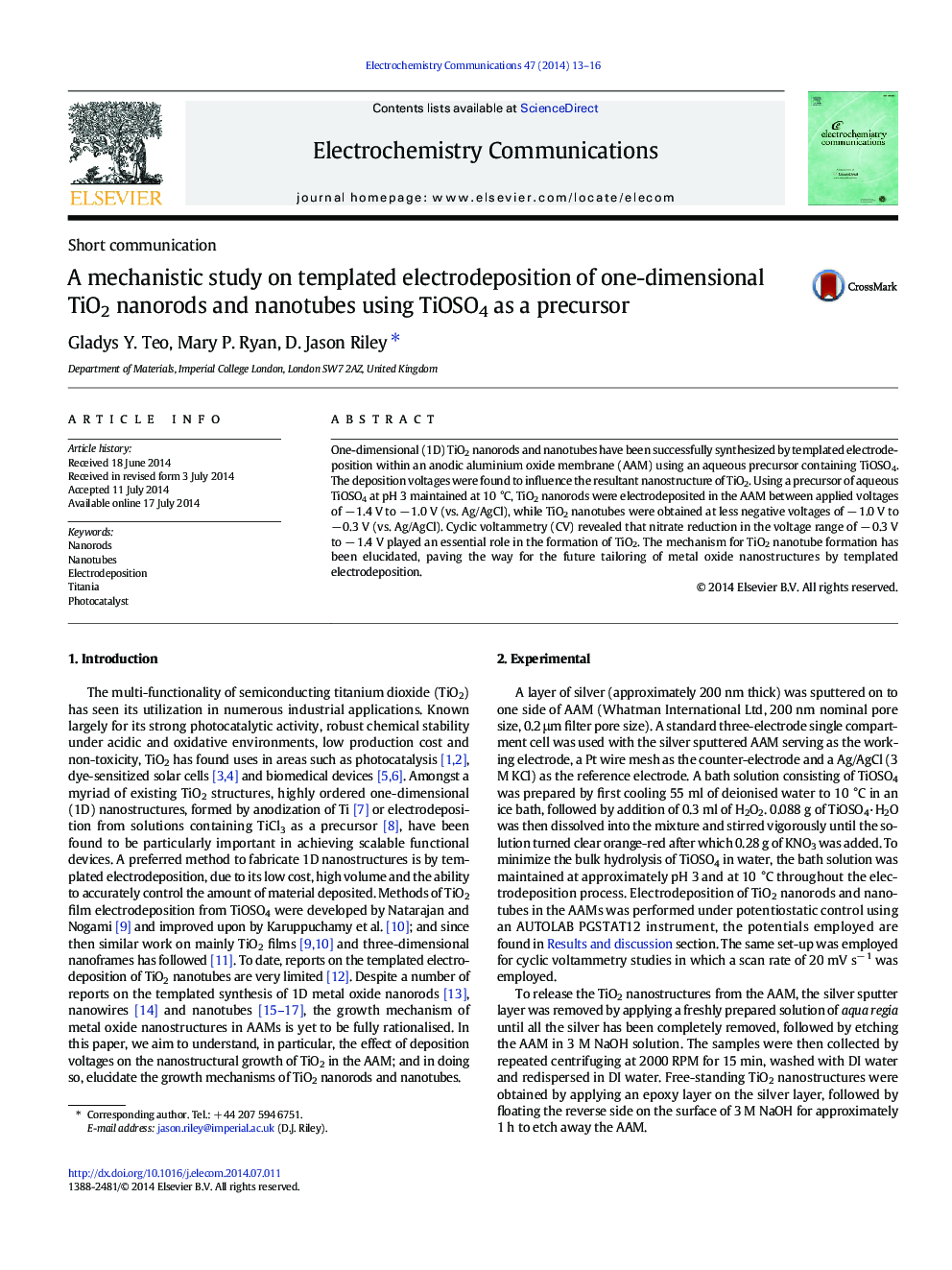| Article ID | Journal | Published Year | Pages | File Type |
|---|---|---|---|---|
| 179098 | Electrochemistry Communications | 2014 | 4 Pages |
•TiO2 nanorods and nanotubes were synthesized by template electrodeposition.•The morphology of the as-deposited TiO2 was controlled by the applied potential.•Cyclic voltammetric studies show two peaks for reduction of NO3− in porous alumina.•The mechanism of TiO2 nanotube and nanorod formation is rationalised.
One-dimensional (1D) TiO2 nanorods and nanotubes have been successfully synthesized by templated electrodeposition within an anodic aluminium oxide membrane (AAM) using an aqueous precursor containing TiOSO4. The deposition voltages were found to influence the resultant nanostructure of TiO2. Using a precursor of aqueous TiOSO4 at pH 3 maintained at 10 °C, TiO2 nanorods were electrodeposited in the AAM between applied voltages of − 1.4 V to − 1.0 V (vs. Ag/AgCl), while TiO2 nanotubes were obtained at less negative voltages of − 1.0 V to − 0.3 V (vs. Ag/AgCl). Cyclic voltammetry (CV) revealed that nitrate reduction in the voltage range of − 0.3 V to − 1.4 V played an essential role in the formation of TiO2. The mechanism for TiO2 nanotube formation has been elucidated, paving the way for the future tailoring of metal oxide nanostructures by templated electrodeposition.
Graphical abstractFigure optionsDownload full-size imageDownload as PowerPoint slide
